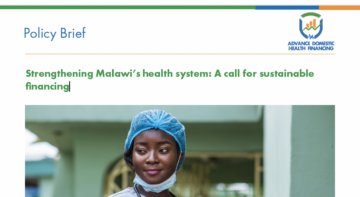
Non-communicable diseases and conditions (NCDs) include cardiovascular diseases, cancers, diabetes and chronic respiratory diseases. The World Health Organization estimates that NCDs kill 38 million people each year with three quarters of these deaths (28 million) occurring in low- and middle-income countries. Globally, 16 million NCD deaths occur before the age of 70, with 82 percent of these “premature” deaths occurring in low- and middle-income countries. The WHO further estimates that NCDs were responsible for 64 percent of the total deaths in 23 low- and middle- income countries, 47 percent of these occurring in people who were younger than 70 years.
Among NCDs, cardiovascular diseases account for most deaths (17.5 million annually), followed by cancers (8.2 million), respiratory diseases (4 million) and diabetes (1.5 million). The major risk factors for these conditions include tobacco use, physical inactivity, alcohol consumption, and unhealthy diets. This policy brief discusses the key risk factors for NCDs, the economic and social costs involved in treating and managing these diseases and the need for Kenya to develop and implement a health promotion programme to educate the public on prevention, the augmentation and implementation of of fiscal and legislative measures and the integration of NCDs into primary healthcare services.
Tackling the Rise in Non- Communicable Diseases and Conditions in Kenya
Related Publications





